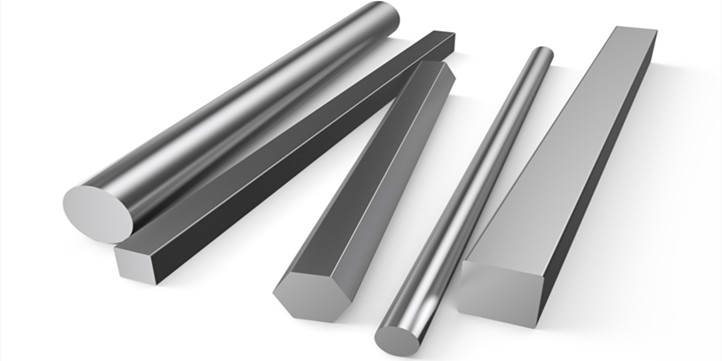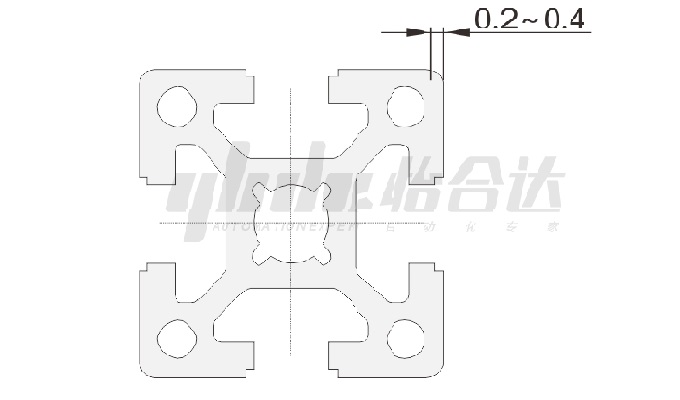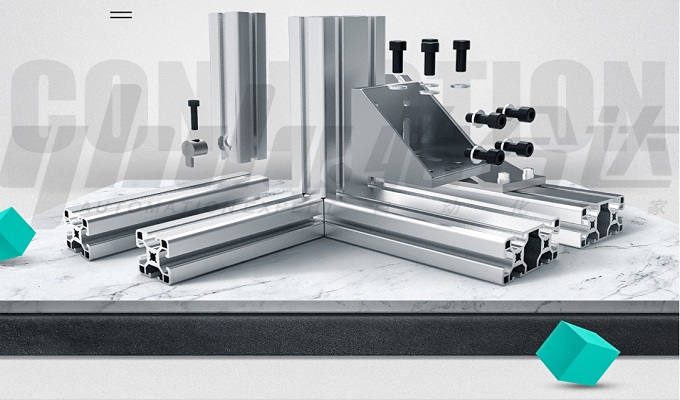In the fields of architecture, engineering, and manufacturing, aluminum profiles find extensive applications due to their lightweight nature, corrosion resistance, and high ductility. However, ensuring the efficiency and sustainability of a project requires careful consideration in the selection of aluminum profiles. This article delves into the principles and fundamental knowledge of aluminum profile selection, aiding you in making informed decisions for your projects.

I. Basic Properties of Aluminum
Aluminum is a silver-white metal that forms a protective oxide layer in humid air, preventing corrosion. With a relative density of 2.7 g/cm3, a melting point of 660°C, and excellent conductivity, aluminum is known for its high strength-to-weight ratio, good thermal conductivity, high reflectivity, and oxidation resistance.
II. Types of Aluminum
Profile Types: Aluminum profiles, aluminum pipes, aluminum rods, etc.
Sheet Types: Aluminum sheets, aluminum foils, aluminum strips (coils).
Casting Types: Aluminum castings, aluminum granules.
Ⅲ. Common Alloy Grades
Understanding alloy grades is crucial for selecting the right aluminum for your specific application. Examples include:
1100: For corrosion-resistant components like storage containers and thin sheet processing.
2011: High machinability alloy suitable for machining parts.
3003: Balancing strength and corrosion resistance, ideal for pressure vessels and pipes.
5052: Excellent corrosion resistance, suitable for marine applications.
6061: Heat-treatable alloy with good strength, used in aerospace and structural applications.
6063: Extrusion alloy with good formability, used in architectural applications.
7075: High-strength alloy for aerospace and high-stress applications.
Extended Reading: 8 Series Aluminum and Aluminum Alloys: A Comprehensive Guide

IV. Surface Treatment of Aluminum
Various surface treatments enhance aluminum's properties, including:
Sandblasting or brushed surface followed by anodization.
Electrophoretic coating for improved corrosion resistance.
Powder coating after polishing for a durable finish.
Electroplating after mirror polishing.
Wood grain thermal transfer.
High molecular PVC film coating.
If you want to learn more information about aluminium surface treatment, you could read this article → Aluminum Materials Surface Treatment: Complete Introduction

Ⅴ.Aluminium Profile
Aluminum profiles undergo processes like melting, extrusion, cutting, CNC machining, surface pretreatment, and coloring. Profiles find applications in construction, heat sinks, industrial manufacturing, rail vehicle structures, and decorative purposes.
VI. Aluminum Sheets
Aluminum sheets come in various thicknesses and are used for electronic product casings, household appliances, and internal heat-conducting components. Surface treatments like sandblasting, anodizing, or powder coating enhance their aesthetic and functional properties.

VII. Aluminum Alloy Die Casting
Die-cast aluminum components require careful structural design to avoid complex shapes. Considerations include even wall thickness, smooth flow lines, and the selection of appropriate alloy grades based on strength requirements.
Conclusion
Understanding the diverse applications and properties of aluminum alloys is essential for making informed decisions in engineering projects. Collaborating with professional aluminum suppliers is recommended to receive expert advice tailored to your project's specific needs. Choosing the right aluminum profiles not only enhances project quality but also lays a solid foundation for successful implementation.





